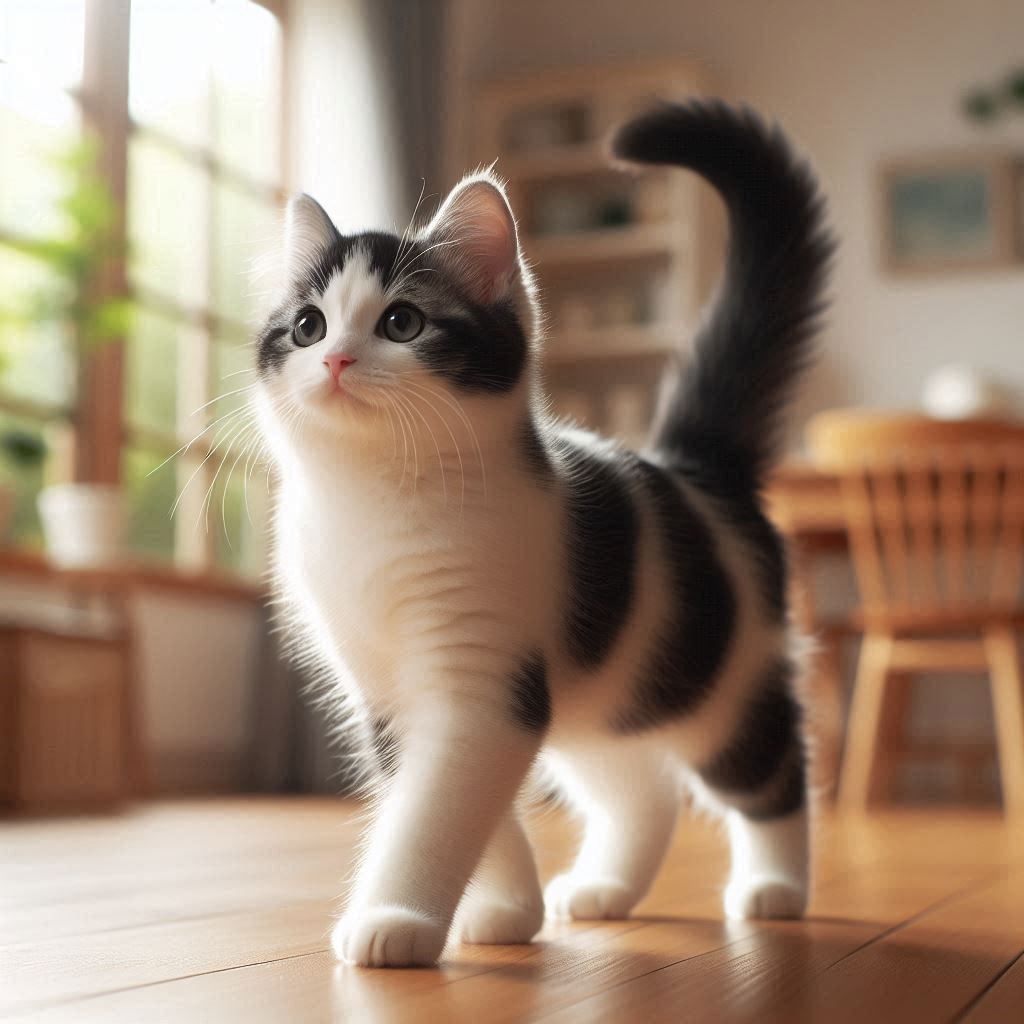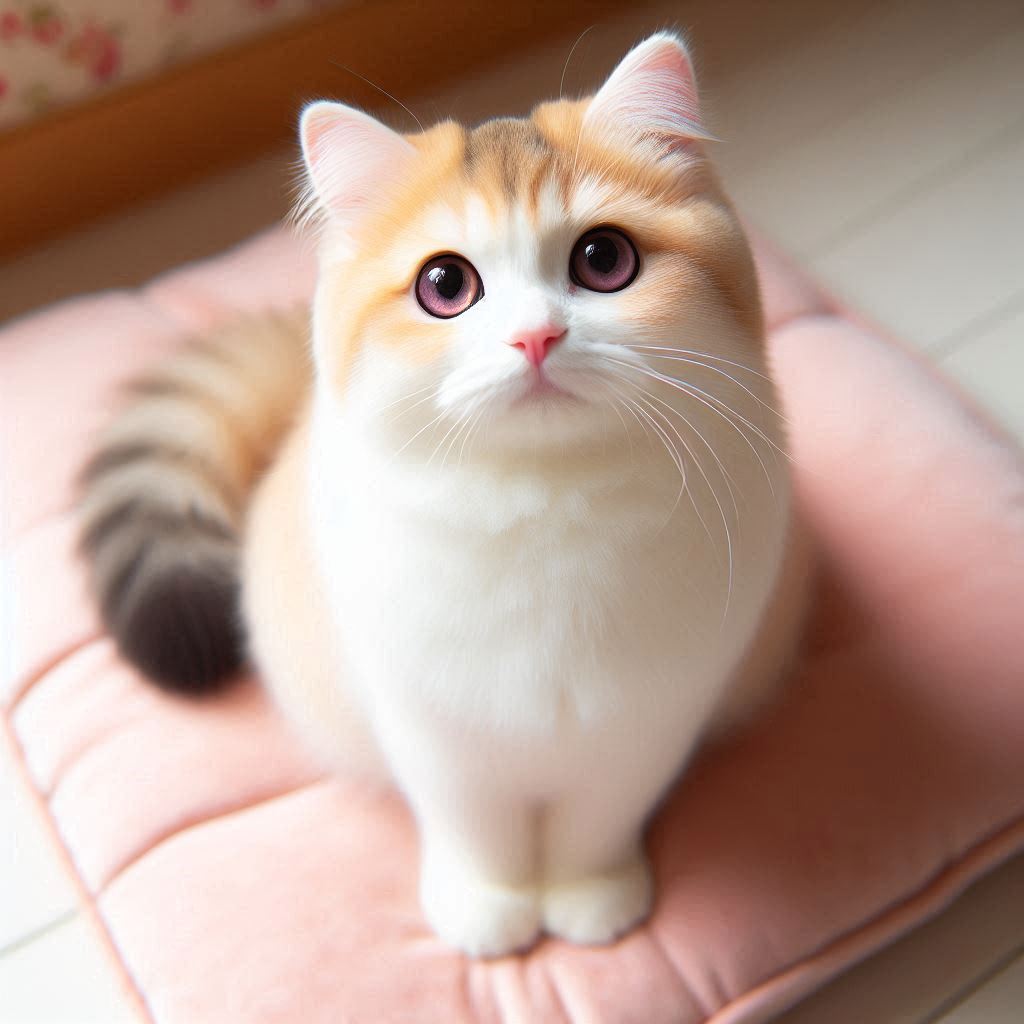The Japanese Bobtail is a unique and ancient breed known for its distinct short, pom-pom-like tail, sleek body, and lively personality. Revered in Japan for centuries, this cat is often considered a symbol of good luck and is famously associated with the “Maneki-neko,” or beckoning cat, a cultural symbol of fortune. With its charming personality and striking appearance, the Japanese Bobtail has become a beloved breed worldwide.
History and Origin of the Japanese Bobtail Cat
The Japanese Bobtail has a long and storied history that dates back over 1,000 years in Japan. This breed is often depicted in traditional Japanese art, folklore, and even ceramics, and it was believed to bring prosperity and happiness. While the breed is native to Japan, its ancestors likely arrived from China or Korea, brought over by traders or Buddhist monks.
In the early 17th century, Japanese Bobtails were tasked with helping to protect rice crops by controlling the rodent population. Over time, the breed gained popularity as a pet among the aristocracy and became a part of Japanese culture. The breed was officially introduced to the United States in the 1960s, where it was recognized by cat registries like the CFA (Cat Fanciers’ Association).
Physical Characteristics the Japanese Japanese Cat
- Tail: The most defining feature of the Japanese Bobtail is its unique short, kinked tail. Unlike other cats with long tails, the Japanese Bobtail has a tail that can range from 2 to 4 inches, often resembling a fluffy pom-pom. Each cat’s tail is different, and the bones within the tail create various curves or angles, giving each Bobtail a truly individual look.
- Coat: Japanese Bobtails come in both short-haired and long-haired varieties. Their fur is soft and silky, with minimal undercoat, making them low-shedding and relatively easy to groom. The most popular color pattern is calico, especially in Japan, but they can come in a variety of colors and patterns, including solid, bicolor, tricolor, tabby, and more.
- Eyes: Japanese Bobtail cats have large, oval eyes that are bright and expressive. Their eye color varies depending on coat color and pattern, and it’s not uncommon to see Japanese Bobtails with odd-colored eyes (one blue and one gold), which only adds to their striking appearance.
- Body: Japanese Bobtails are medium-sized cats, with a lean, muscular build and long, slender legs that give them an agile and elegant appearance. They typically weigh between 6 to 10 pounds.
- Face: They have a triangular head with high cheekbones, and their ears are large, upright, and alert, contributing to their overall sharp and expressive look.
Personality and Temperament
Japanese Bobtails are known for their energetic, outgoing, and playful nature. They are incredibly affectionate and enjoy being around people, making them an ideal pet for families or individuals who want a social and interactive cat.
Affectionate and Loyal:
Japanese Bobtails are highly loyal and form close bonds with their owners. They love being around their human family and are known to follow their owners from room to room, always wanting to be part of the action.
Intelligent and Playful:
This breed is intelligent and loves interactive play. They are quick learners and can be taught tricks, fetch, and even how to walk on a leash. Their playful and curious nature means they are always eager to explore their environment and engage with toys or puzzles.
Vocal and Communicative:
Japanese Bobtails are very vocal and love to “talk” to their owners using a wide range of soft, melodic sounds. Their voices are known for being sweet and chirpy, making them delightful companions to have conversations with.
Active and Agile:
As natural athletes, Japanese Bobtails are highly active and agile. They enjoy climbing, jumping, and playing games that simulate hunting. Because of their energetic personality, they thrive in homes that offer plenty of toys and vertical spaces for them to explore.

Grooming and Care
Japanese Bobtails are relatively low-maintenance when it comes to grooming, especially the short-haired variety. Here are some grooming tips for both coat types:
- Short-Haired: The short-haired Japanese Bobtail requires weekly brushing to keep their coat smooth and shiny and to remove loose hairs.
- Long-Haired: Long-haired Japanese Bobtails need a bit more attention, with regular brushing to prevent tangles and matting.
They are a low-shedding breed, and their minimal undercoat means less loose fur around the house. Aside from coat care, regular maintenance such as nail trimming, ear cleaning, and dental hygiene is important to ensure their overall health and well-being.
Health and Lifespan
Japanese Bobtails are generally a healthy breed, with no major breed-specific health issues. They have a relatively robust genetic background, making them less prone to hereditary conditions. Some common health tips include:
- Regular Vet Check-ups: Routine veterinary visits are essential to catch any potential health issues early.
- Healthy Diet: A balanced and nutritious diet will help maintain their energy levels and overall health.
With proper care, Japanese Bobtails have a long lifespan, typically living between 12 to 16 years, and many live even longer.
Why Choose a Japanese Bobtail Cat?
If you’re looking for a cat that combines elegance, intelligence, and a lively personality, the Japanese Bobtail is an excellent choice. Their affectionate nature, combined with their love of play and exploration, makes them an ideal pet for active families or individuals who want a loyal companion. Their unique tail and engaging personality ensure that they stand out in any home.
Conclusion
The Japanese Bobtail is a breed full of personality, charm, and beauty. With its distinct pom-pom tail, playful spirit, and strong ties to Japanese culture, it is a cat that offers both companionship and a bit of historical mystique. Whether you’re drawn to its unique looks or its energetic and social demeanor, the Japanese Bobtail makes for a wonderful addition to any household.



